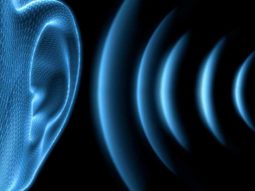Fungal Nail Infection Best Treatment
Fungal nail infections, also known as onychomycosis, are a common dermatological condition caused by the invasion of fungal pathogens into the nails.
This article aims to provide an overview of the best treatment options for fungal nail infections based on current scientific evidence.
The causes and symptoms of these infections will be discussed, along with methods for diagnosis.
Additionally, both topical treatments and oral medications will be examined in terms of their efficacy in treating this condition.
Causes of Fungal Nail Infections
The causes of fungal nail infections are primarily associated with the overgrowth of dermatophyte fungi or yeasts on the nails. These microorganisms thrive in warm and moist environments, making certain individuals more prone to fungal nail infections. People who frequently expose their nails to water and humidity, such as swimmers or those who work in wet conditions, are at a higher risk of developing these infections. Additionally, individuals with compromised immune systems, diabetes, or circulatory problems may also be more susceptible.
Prevention of fungal nail infections involves maintaining good hygiene practices and taking precautions to minimize exposure to fungi. It is recommended to keep nails clean and dry, regularly trim them straight across without cutting too close to the skin, and avoid sharing personal items like towels or clippers that could potentially harbor fungi. Wearing breathable footwear and changing socks frequently can also help prevent moisture buildup.
While there are several natural remedies for fungal nail infections available, it is important to note that scientific evidence supporting their effectiveness is limited. Some commonly suggested natural remedies include applying tea tree oil, vinegar soaks, garlic paste, or various essential oils directly onto the affected nails. However, it is advisable for individuals seeking treatment for fungal nail infections to consult a healthcare professional before relying solely on natural remedies.
Symptoms of Fungal Nail Infections
Characterized by discoloration, thickening, and brittle nails, symptoms of fungal nail infections typically include pain or discomfort. The following are common signs and symptoms associated with this condition:
- Yellow or white spots on the nails
- Thickened or distorted nail shape
- Brittle or crumbling nails
Visualize a person's fingernails with patches of yellow and white spots scattered across the surface. As you zoom closer, observe how the affected nails become thicker than their healthy counterparts. Imagine trying to cut these thickened nails, only to find that they crumble easily under pressure.
Prevention strategies play a crucial role in reducing the risk of fungal nail infections. Proper foot hygiene is essential, including keeping feet clean and dry, avoiding walking barefoot in public areas such as locker rooms or pool decks. Wear breathable shoes and socks made from natural materials. Additionally, regularly trimming nails short and avoiding sharing personal items like towels or clippers can help prevent the spread of fungal infections.
While there are various natural remedies suggested for treating fungal nail infections, consulting a healthcare professional before trying any natural remedy is recommended for accurate diagnosis and appropriate treatment options.
Diagnosis of Fungal Nail Infections
Diagnosing fungal nail infections involves various methods, such as visual examination, laboratory tests, and microscopic analysis of collected samples.
Visual examination is the initial step in diagnosing a fungal nail infection. It involves observing the affected area for symptoms such as discoloration, thickening, crumbling, or distortion of the nail. However, visual examination alone is not sufficient to confirm a diagnosis.
Laboratory tests play a crucial role in confirming the presence of fungal organisms in nails. The most commonly used test is fungal culture. In this test, a sample from the affected nail is collected and cultured under specific conditions to promote fungal growth. The isolated fungi are then identified using techniques such as microscopy or DNA-based methods.
Microscopic analysis is also an essential tool for diagnosing fungal nail infections. It involves examining the collected sample under a microscope to identify characteristic features of fungal elements like hyphae or spores.
Accurate diagnosis of fungal nail infections enables appropriate treatment selection. Treatment options for fungal nail infections include topical antifungal medications, oral antifungal drugs, or a combination of both depending on the severity and extent of infection.
Topical Treatments for Fungal Nail Infections
Topical treatments are commonly used for managing fungal nail infections, targeting the affected area directly with antifungal agents. These treatments offer convenience and ease of use, making them a popular choice among patients.
Here are some key points to consider regarding topical treatments:
- Antifungal creams: These creams contain active ingredients like terbinafine or clotrimazole, which work by inhibiting the growth of fungi. They are typically applied directly to the infected nails once or twice daily.
- Nail lacquers: Nail lacquers containing antifungal agents such as ciclopirox are also available. These lacquers form a protective coat over the nails, allowing long-term contact between the antifungal agent and the infection site.
- Solutions and sprays: Some topical treatments come in solution or spray form, providing easy application to hard-to-reach areas.
While topical treatments are effective for mild to moderate fungal nail infections, severe cases may require alternative interventions such as laser therapy. Laser therapy targets the fungus by emitting high-intensity light pulses that penetrate through the nail plate without causing damage to surrounding tissues. This treatment option is gaining popularity due to its non-invasive nature and potential for improved outcomes.
Oral Medications for Fungal Nail Infections
Oral medications, including antifungal drugs such as terbinafine and itraconazole, are often prescribed for the treatment of moderate to severe cases of fungal nail infections. These oral antifungals work by inhibiting the growth and spread of the fungi responsible for the infection. They are considered effective in treating fungal nail infections due to their ability to penetrate the nail bed and reach the site of infection.
When compared to topical treatments, oral antifungals have been shown to be more successful in eradicating fungal nail infections.
Studies have demonstrated higher cure rates with these medications, ranging from 50% to 80%. Additionally, they offer advantages such as convenience and ease of use compared to topical treatments that require daily application over an extended period.
While home remedies may be popular among individuals seeking alternative or complementary treatments, there is limited scientific evidence supporting their efficacy in treating fungal nail infections. Some commonly suggested home remedies include vinegar soaks, tea tree oil applications, and hydrogen peroxide solutions. However, these approaches have not been extensively studied or proven effective in treating fungal nail infections.
Therefore, when faced with a moderate to severe case of a fungal nail infection, it is advisable to consult a healthcare professional who can prescribe appropriate oral antifungal medication rather than relying solely on unproven home remedies.
Frequently Asked Questions
Are Fungal Nail Infections Contagious?
Fungal nail infections can be contagious. They are caused by fungi that invade the nails and can spread through direct contact or sharing personal items. Symptoms include thickened, discolored nails. Treatments involve antifungal medications and maintaining good foot hygiene.
Can I Prevent Fungal Nail Infections?
Preventing fungal nail infections involves adopting certain lifestyle changes. These changes may include maintaining good foot hygiene, wearing breathable footwear, avoiding prolonged moisture exposure, and using antifungal powders or sprays as preventive measures.
What Are the Risk Factors for Developing a Fungal Nail Infection?
The risk factors for developing a fungal nail infection include older age, male gender, underlying health conditions such as diabetes and immunodeficiency, trauma or injury to the nails, prolonged exposure to moisture and warmth, and certain lifestyle habits.
How Long Does It Take for a Fungal Nail Infection to Clear Up?
The average recovery time for a fungal nail infection can vary depending on the severity of the infection and the chosen treatment option. Effective treatments may include topical antifungal medications, oral antifungal medications, or surgical interventions.
Are There Any Natural Remedies or Home Treatments for Fungal Nail Infections?
The effectiveness of natural remedies and home treatments for fungal nail infections remains a topic of interest. Further research is needed to determine their efficacy and safety compared to conventional treatment options.
Previous Posts






